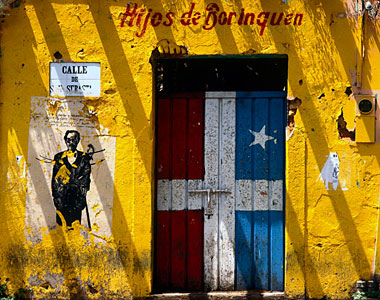by Jorge Duany, Ph.D., Guest Writer
Orlando Sentinel (Oct 15, 2009)
The signs of Puerto Rico’s acute socioeconomic crisis are everywhere.
The Island’s economy is expected to decline by 5.5 percent this year. Local consumer debt reached almost 23 billion U.S. dollars in 2008. The unemployment rate was 16.5 percent in July 2009. Since 1996, 45,000 manufacturing jobs have been eliminated. For the first time in years, the poverty rate increased during the current decade. The massive layoffs by the Commonwealth government have caused public dismay. Many people are extremely worried about keeping their jobs and paying their bills, taxes, insurance, and mortgages.
One of the traditional strategies in the face of economic difficulties in Puerto Rico has been emigration. An increasing number of Puerto Ricans is seriously considering that alternative, despite the recession of the U.S. economy.
During the current decade, at least one-quarter of a million Puerto Ricans has moved to the continental United States. According to the Puerto Rico Community Survey, nearly 428,000 residents of the Island relocated to the mainland, while about 224,000 returned from abroad between the years 2000 and 2007. According to the Puerto Rico Ports Authority, the net passenger movement to the United States totaled around 297,200 persons between 2000 and 2009. In 2008, 51.6 percent of all persons of Puerto Rican origin lived outside the Island.
Aside from the massive resurgence of the Puerto Rican exodus, the latest census statistics confirm the migrants’ changing settlement patterns. In 2008, the state of Florida had the second largest number of Puerto Rican residents (744.4 thousand), after New York (1.1 million). Between the years 2000 and 2007, five of the ten leading destinations of Puerto Rican migrants were in Florida: Orange, Miami-Dade, Broward, Hillsborough, and Osceola counties.
During the same period, 38,257 residents of the Island resettled in Orange County, the center of the Orlando metropolitan area, which has displaced Philadelphia and Chicago as the second concentration for Puerto Ricans in the U.S. mainland. Other popular destinations for the migrants are Hamden County, Massachusetts; Philadelphia; the Bronx in New York; Hartford and New Haven, Connecticut.
On average, contemporary Puerto Rican migrants are younger, better educated, more skilled, and more likely to be bilingual than the Island’s population. Still, it is exaggerated to characterize the entire new migrant flow as a “brain drain,” since the bulk of the migrants has a secondary education and a blue-collar or service job.
At the same time, a growing proportion consists of highly qualified professionals, including medical doctors, engineers, nurses, and teachers. Among the main motivations for this continuous exodus are the gaps in wages, working conditions, and opportunities for professional development on the Island and in the United States. Furthermore, many migrants are seeking a better “quality of life,” referring especially to public services, housing costs, safety, and tranquility.
Finally, the most recent census estimates allow a comparison between the living conditions of Puerto Ricans on and off the Island.
In 2008, Puerto Rico’s unemployment rate was 14.8 percent, compared to 10 percent for Puerto Ricans in the United States, 9.3 percent in Florida, and 10.4 percent in Orlando. The median income for Puerto Rican households on the Island ($18,190) was less than half than in the United States ($39,039), Florida ($41,892), and Orlando ($39,778). In turn, Puerto Rico’s poverty rate (45 percent) was much higher than for Puerto Ricans in the United States (24 percent), Florida (17.5 percent), and Orlando (16.2 percent).
Given such wide discrepancies in employment opportunities, income levels, and other economic indicators, the new migrant wave will probably persist, until living conditions on the Island improve substantially. Let’s hope that happens soon.
Jorge Duany is Professor of Anthropology at the University of Puerto Rico, Río Piedras. He is currently the Wilbur Marvin Visiting Scholar at the David Rockefeller Center for Latin American Studies at Harvard University. He earned his Ph.D. in Latin American Studies, with a concentration in anthropology, at the University of California, Berkeley. He also holds an M.A. in Social Sciences from the University of Chicago and a B.A. in Psychology from Columbia University. He has published extensively on Caribbean migration, ethnicity, race, nationalism, and transnationalism. His most recent coedited book is “How the United States Racializes Latinos: White Hegemony and Its Consequences” (2009).
